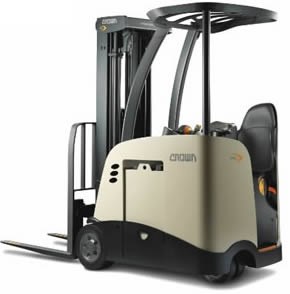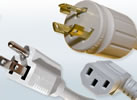This slower absorption reduces the impact of the fall and the likelihood of a catastrophic outcome. Rock climbing ropes are generally categorized into three main types: single, twin and half or double. Read More…
Since our beginning in 1967, we have had experience designing, manufacturing and distributing the highest quality braided ropes and cords. Braided ropes and cordage are produced in all common fibers.

At Orion Cordage, we specialize in crafting high-quality ropes that meet the diverse needs of our customers. We are dedicated to providing a broad range of rope solutions, from durable industrial ropes to specialized products designed for specific applications. Our commitment to excellence is reflected in our extensive product line, which includes ropes for marine, agricultural, construction, and ...

Twisted, double-braided in nylon or polyester, for climbing or pulling – whatever it is you need, Buccaneer Rope Company can make the difference. Since 1975, we’ve been designing, manufacturing & distributing quality rope products for the marine, industrial, electrical, arborist and government markets. If you need versatile, high-quality rope products for demanding applications, call us today!

At Whitehill Manufacturing Corporation, we excel in crafting high-quality ropes designed to meet a diverse range of industrial and commercial needs. We take pride in our extensive experience in rope manufacturing, ensuring that each product adheres to the highest standards of durability and performance. Our ropes, known for their strength and reliability, are meticulously engineered to withstand...

At Consolidated Cordage Corporation, Inc., we pride ourselves on our deep-rooted expertise in crafting high-quality ropes tailored to meet a diverse range of industrial and commercial needs. Our company has established a reputation for excellence through our unwavering commitment to superior materials and meticulous craftsmanship. We offer an extensive array of ropes, each designed to deliver...

At JB Rope Supply, we pride ourselves on being a leading provider of high-quality ropes designed to meet a diverse range of needs across various industries. Our extensive product line includes everything from durable industrial ropes to specialized ropes for marine, climbing, and rescue applications. We meticulously engineer each rope to ensure it meets rigorous standards of strength,...

More Climbing Rope Suppliers
Single ropes are generally between 9.5 mm and 11 mm in width, while they vary greatly in length. The standard for single ropes, though, holds around 10.5 mm by 50 mm. Designed to be used alone, single ropes are the most common type of climbing rope. They are used for top-roping, sport climbing and trad climbing. Twin ropes are made of two separate ropes of the same size, meant to be clipped together through each piece of gear and used as one rope. Twin ropes are extremely thin, usually about 7.6 mm each. They are mostly used in ultra-long rock, ice, mixed routes and expeditions that require lightweight equipment.
Half or double ropes are similar to twin ropes in that they are also two ropes of the same size and used as a pair, but the similarity ends there. Unlike twin ropes, with half ropes, only one rope is clipped through each piece of gear. The climber alternates which rope is clipped through each piece. Considerably thicker than twin ropes, this type of climbing rope is about 8.8 mm thick, and can hold a climber in a fall if the other rope fails. Its alternating clips also reduce rope drag. Half ropes are good for long, wandering climbs and trails with treacherous traverses or sharp rocks.
When considering climbing ropes, a potential buyer should ask him or herself what he or she wants and needs in the way of: rope diameter, rope weight, weight the rope will be supporting, terrain, weather, rope construction, middle marks and bi-patterns and dry treatments. A middle mark is placed on a rope with black paint or thread to identify the middle of the rope. Bi-patterns or bi-colors are a change in weave pattern that help a climber clearly differentiate between the two ropes, as well as easily identify the midpoint. These tools contribute to the safety of a climber.













 Cranes
Cranes Electric Hoists
Electric Hoists Forklifts
Forklifts Hydraulic Lifts
Hydraulic Lifts Rope
Rope Wire Rope
Wire Rope Castings & Forgings
Castings & Forgings Bulk Material Handling
Bulk Material Handling Electrical & Electronic Components
Electrical & Electronic Components Flow Instrumentation
Flow Instrumentation Hardware
Hardware Material Handling Equipment
Material Handling Equipment Metal Cutting Services
Metal Cutting Services Metal Forming Services
Metal Forming Services Metal Suppliers
Metal Suppliers Motion Control Products
Motion Control Products Plant & Facility Equipment
Plant & Facility Equipment Plant & Facility Supplies
Plant & Facility Supplies Plastic Molding Processes
Plastic Molding Processes Pumps & Valves
Pumps & Valves Recycling Equipment
Recycling Equipment Rubber Products & Services
Rubber Products & Services